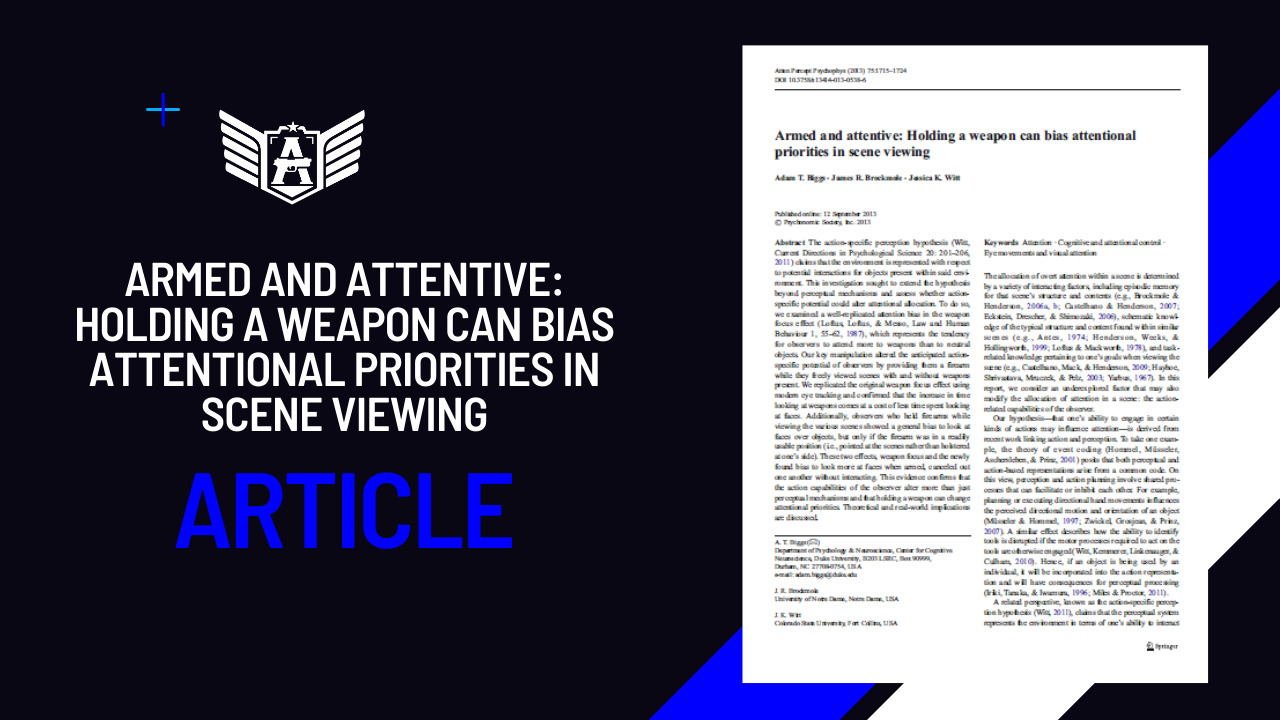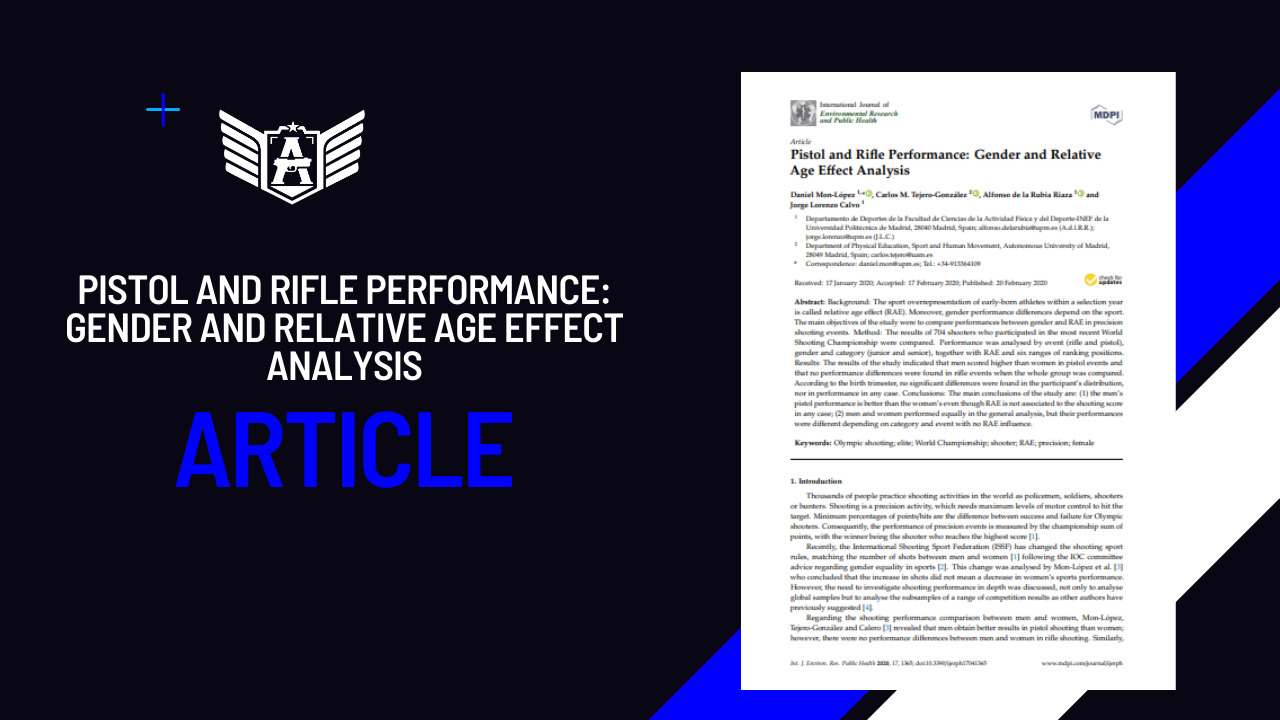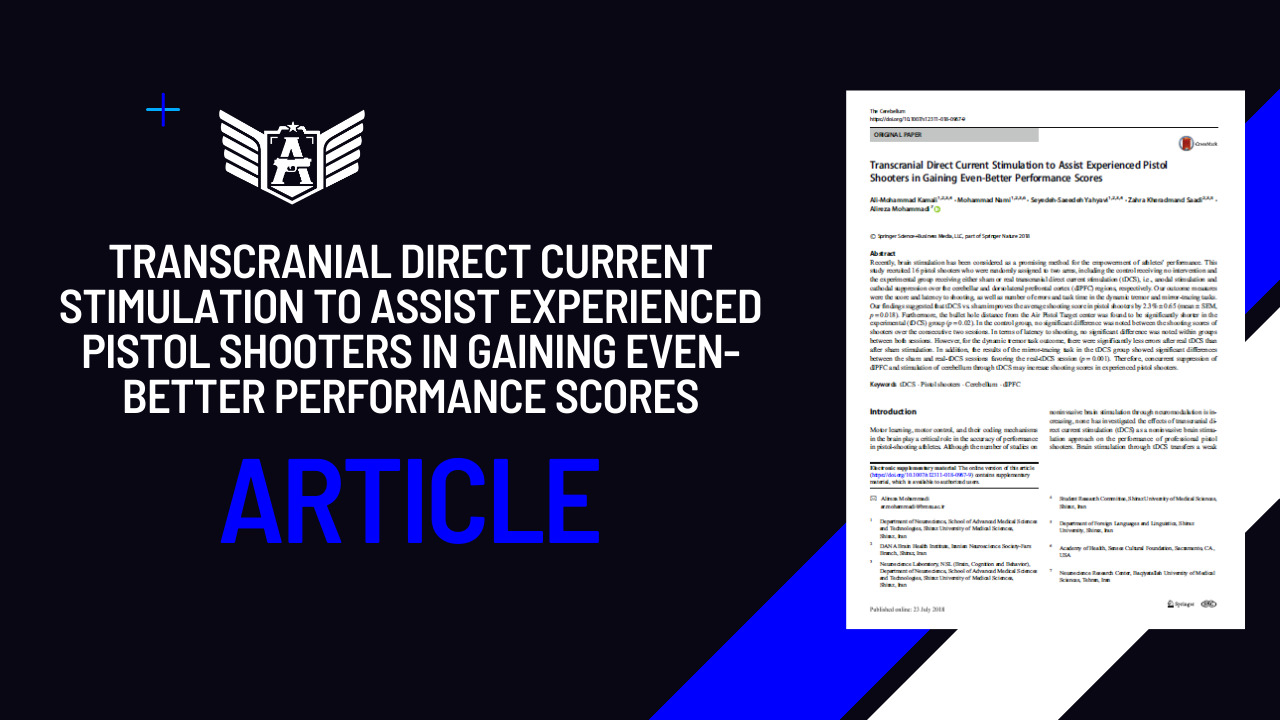Biggs, A. T., Brockmole, J. R., & Witt, J. K. (2013) conducted a study titled “Armed and Attentive: Holding a Weapon Can Bias Attentional Priorities in Scene Viewing.” The researchers investigated how the attentional focus of individuals holding a firearm differed from those who were not holding one.
The study involved three groups of around 20 undergraduate students from the University of Notre Dame. Participants were presented with 38 full-color digital photographs, half of which depicted an actor holding a neutral object like a remote control, bouquet of flowers, or drink. The other half showcased the actor holding a single weapon, such as a gun or a knife.
The participants’ eye movements were monitored using an eye tracking device. The experiments were conducted under three conditions: when the subjects were unarmed, when they held a gun in their hands, and when a firearm was placed in a holster.
“Armed observers spent less time looking at objects and moretime looking at faces than did their unarmed counterparts. Holding a weapon therefore created a bias to look at faces, much as the presence of a weapon created a bias to look at the weapon”
According to the authors, in a series of three experiments, participants were presented with scenes featuring an actor holding either a weapon (such as a gun) or a neutral object (like a drink). Their eye movements were tracked to gauge the attention given to the actor’s face versus the object held. Experiment 1 involved unarmed observers, while Experiment 2 had observers holding a replica gun in a defensive stance. In Experiment 3, observers wore a holstered gun on their hip.
Across all three experiments, there was a tendency for observers to prioritize attention towards scenes containing weapons over neutral objects, a phenomenon known as “weapon focus.” However, participants holding a firearm exhibited a distinctive pattern: they displayed a heightened focus on faces and a reduced focus on objects. Notably, this shift in attention was not observed when the firearm was holstered, suggesting that the mere possession of a weapon isn’t enough to influence attentional priorities. In conclusion, the act of holding a gun can significantly modify how attention is distributed within visual scenes, as observed in free-viewing conditions.

In conclusion, the present study shows that the actionspecific potential of the observer can alter attentional allocation. We replicated weapon focus with modern eye-tracking technologies and verified that the increase in looking at weapons does indeed come at a cost of looking less at faces. However, arming the observer with a gun elicited a separate bias to look at faces if the firearm was in a readily usable position. These two biases, weapon focus and the armed biasto look at faces, were similar in magnitude but opposite in direction. The result was not a modification of the weapon focus effect, but a return to baseline performance where armed observers looked at armed actors as much as unarmed observers looked at unarmed actors. The present evidence therefore helps show just how important the capabilities of the observer are in affecting cognitive functioning. Simply holding a gun altered attentional allocation and influenced gaze control decisions. Thus, factors unrelated to a given task or the physical properties of the image are capable of influencing cognitive control. (Biggts et al., 2013)
Biggs, A. T., Brockmole, J. R., & Witt, J. K. (2013). Armed and attentive: Holding a weapon can bias attentional priorities in scene viewing. Attention, Perception, & Psychophysics, 75, 1715-1724.




